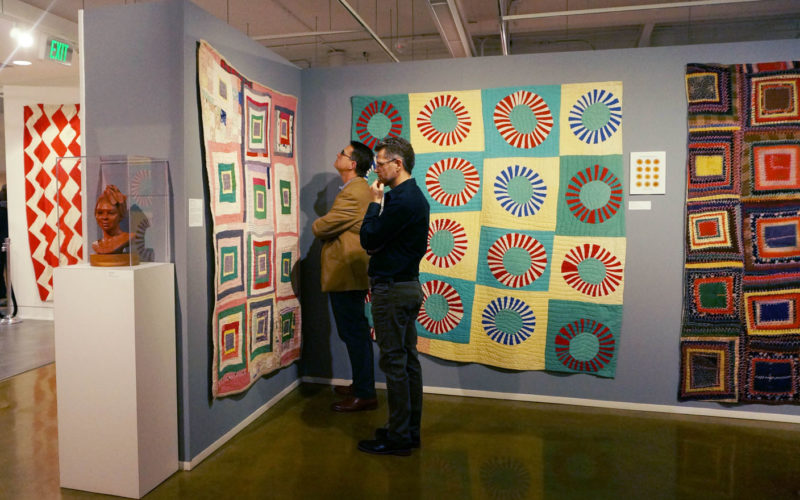Quilts piece together stories of African-American life
JOCELYN MURPHY
jmurphy@nwadg.com
It was thrilling for Scott Heffley as he walked through the exhibition space at the Fort Smith Regional Art Museum last month. After investing more than three decades of his life in seeking out and collecting dynamic examples of African-American quilts, seeing his collection on display for the first time was a momentous experience.
“Quilts are big, so you never really get to fully see them,” the collector shares. “That’s why I think there is a particular appeal for me, because they’re big canvases. And you put that on a wall — of course they’re not meant to be on a wall; they’re meant to be on a bed — then they become graphic works of art.”
The exhibition, “Bold Improvisation: Searching for African-American Quilts” comprises nearly 40 quilts from Heffley’s collection, as well as a few other African textiles for comparison. Born from a love of American folk art — and roots in Pennsylvania surrounded by Anglo American and Amish culture and quilts — Heffley was drawn to the extemporized nature of the African-American quilt-making technique.
“In the late 1980s and mid-’90s, quilts were very popular in general. Martha Stewart in her magazines would show quilts laying across the couch or hanging on a wall, so the antique dealers were bringing quilts out a lot,” Heffley remembers of the time when he began his collection. “They were more expensive, but if I could find an African-American quilt, it would often be priced less because the pattern was irregular or more improvisational, and the quilt dealers didn’t quite grasp what it was all about.”
In a more “traditional” quilt-making system, it is usual to repeat the same pattern exactly, block after block, through the entire piece, Heffley explains. While African-Americans certainly created works like that as well, the technique that was more customarily passed down from generation to generation among African-Americans has a different and distinct aesthetic.
By maybe or maybe not beginning with a pattern but then purposefully altering it as the creator goes along, these quilts often have a sense of flux to them. The style creates a dynamic formal presentation, Heffley asserts. He hopes experiencing the intersection of being similar to but different from something so common will make the pieces feel exciting and modern to viewers.
“There’s color moving, and there’s a lot more motion. Your eye moves around by the way the shapes and colors force it,” Heffley says of the quilts in his collection. “Taking a pattern and just letting it go as you wish, changing it because you just like that aesthetic, is more of a modern jazz technique.
“You’re surrounded by these bold colors that are moving all over the place, so it creates this environment where you’re just smack in the middle of this squirming artistic space — and it’s a lot of fun.”
The cultural element of the show provides a deeper level of understanding and connection to America’s past. The quilts on display at FSRAM span a century, some dating back as far as the 1880s. And none of the pieces in Heffley’s collection was created to be decorative.
“Quilts are made to be put on a bed and warm people sleeping under them overnight,” he says, noting the importance some of these works might have served. In a less affluent household, the warmth provided by a quilt would not have been an extra comfort but a necessity for survival.
“They’re all things that were made just for family use and have a real domestic connection,” Heffley shares. “But they are bright and exuberant and exciting because they were decorating their homes, and they were proud of their capabilities, and they had to go to the trouble to make this. The quilts were often made from scratch, but in a very purposeful, direct way. I am thrilled with how they all relate to each other in the installation.”
__
FAQ
‘Bold Improvisation: Searching for African-American Quilts’
WHEN — On display through May 5
WHERE — Fort Smith Regional Art Museum in Fort Smith
COST — Free
INFO — 784-2787, fsram.org



